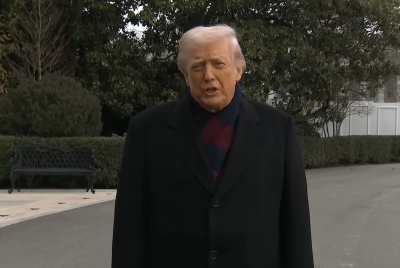Fed Rate Cut: How Will It Lower Your Credit Card and Mortgage Payments?
Averaging more than 20 per cent APR, these rates burden 60 per cent of users carrying month-to-month balances

In a dramatic pivot on 29 October 2025, the Federal Reserve, chaired by Jerome Powell, delivered its second interest rate cut of the year, slashing the federal funds rate by 25 basis points to 3.75-4 per cent amid waning inflation and a faltering job market. This Fed rate cut injects vital liquidity into an economy strained by high borrowing costs, promising incremental relief for households burdened by credit card debt and elevated mortgage rates.
As markets buzz with prospects of a December rate cut, savers confront eroding high-yield savings returns, while auto loans linger in affordability limbo, reshaping personal finance landscapes overnight.
Credit cards: Modest relief for persistent debtors
The Fed rate cut affects credit cards quickly, as most carry variable rates tied to the prime rate, which now tracks slightly lower. With average APRs topping 20 per cent, these costs weigh heavily on the 60 per cent of users who carry month-to-month debt, according to the Federal Reserve Bank of New York.
A quarter-point reduction could adjust within one or two billing cycles, yet delivers slim savings: on £4,563 ($7,000) debt at 24.19 per cent interest with £163 ($250) monthly payments, it trims £40 ($61) over the loan's life. 'A quarter-point rate cut is good, but it doesn't really change a lot for people carrying a balance on their credit card,' remarked Stephen Kates, Bankrate financial analyst. Historical precedent underscores caution; late 2024's one percentage point Fed cut lowered averages by just 0.23 per cent.
As @CNBC posted on X, this move underscores broader finance shifts, urging balance transfers amid sticky high rates.
What this Fed rate cut means for your credit card, mortgage, auto loan, student debt and savings account https://t.co/Sew2HhKm0K
— CNBC (@CNBC) October 29, 2025
'Their standard of living has flatlined... many are borrowing money to supplement their income,' noted Mark Zandi of Moody's, capturing debtor distress. Proactive consolidation remains key for meaningful gains.
Mortgages: Gains for buyers and adjustable loans
Fixed-rate mortgages insulate most homeowners from the Fed rate cut's immediacy, with 15- and 30-year terms locked for decades and influenced more by Treasury yields than the federal funds rate. Yet, new buyers could reap rewards if ongoing cuts compress mortgage rates, presently near 6.75 per cent.
Another 25 basis points might reduce payments on a £228,090 ($350,000) loan by almost £98 ($150) monthly, per TransUnion analysis. 'This presents a tangible opportunity for consumers... over time, such savings can significantly ease household budget pressures,' affirmed Michele Raneri, TransUnion vice president.
Adjustable-rate mortgages and home equity lines of credit, tethered to the prime rate, respond faster—ARMs yearly, HELOCs instantly—potentially unlocking refinancing waves. Though mortgage rates have declined to one-year lows, higher house prices could sideline prospective home buyers, while a sluggish labour market adds constraints, as Reuters reports. Borrowers eyeing moves should monitor yields closely for optimal timing.
Savings yields and auto loans: Act before returns fall
Savers face headwinds from the Fed rate cut, as high-yield accounts and CDs yielding over 4 per cent—above inflation—begin their descent, correlated loosely with the benchmark. 'Yields on high-interest savings accounts and CDs are only going to keep dropping. It is likely time to act to lock in today's high rates,' advised Matt Schulz of LendingTree.
Average savings rates have dipped to 0.48 per cent since September 2024 cuts, per Bankrate. Auto loans, fixed at around 7.1 per cent, offer scant short-term solace despite comprising major expenses, though future easing may bolster incentives.
'While another 25-basis-point rate cut may not drastically lower monthly payments in today's high-rate, high-price environment, it could help lift consumer confidence,' posited Joseph Yoon of Edmunds. With inflation cooling, this policy fosters borrowing ease, but demands swift action to preserve returns.
© Copyright IBTimes 2025. All rights reserved.





















